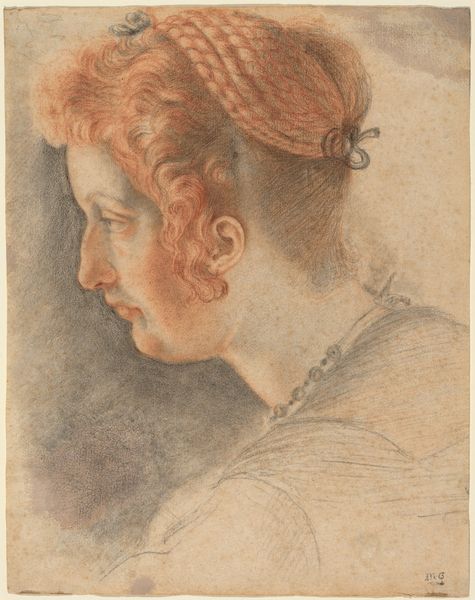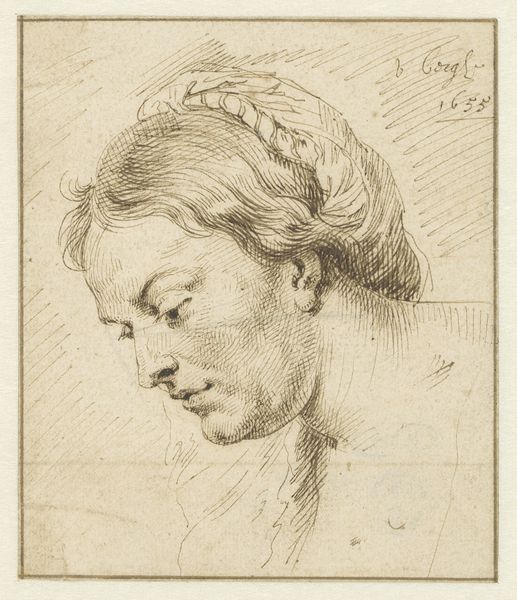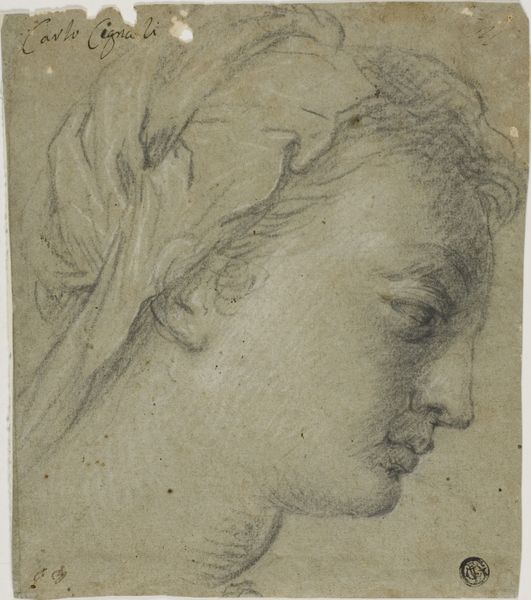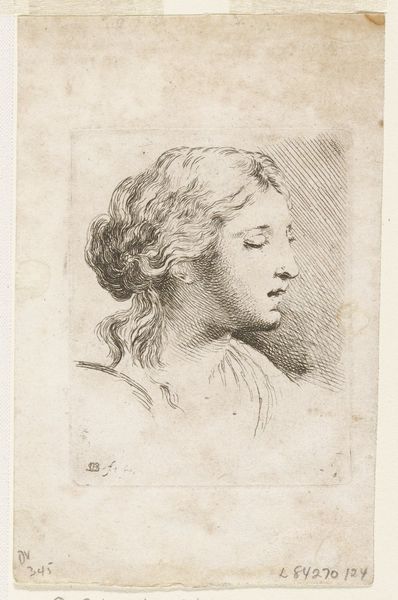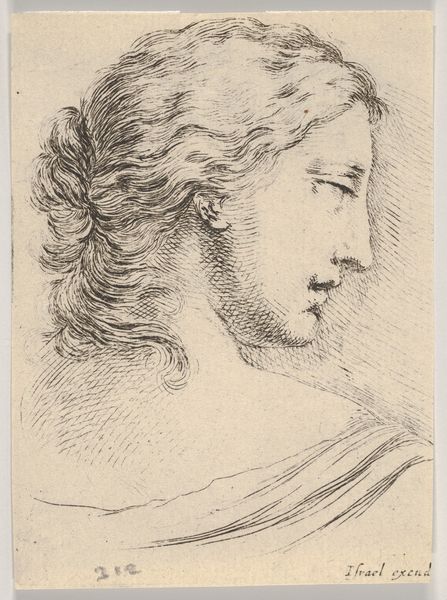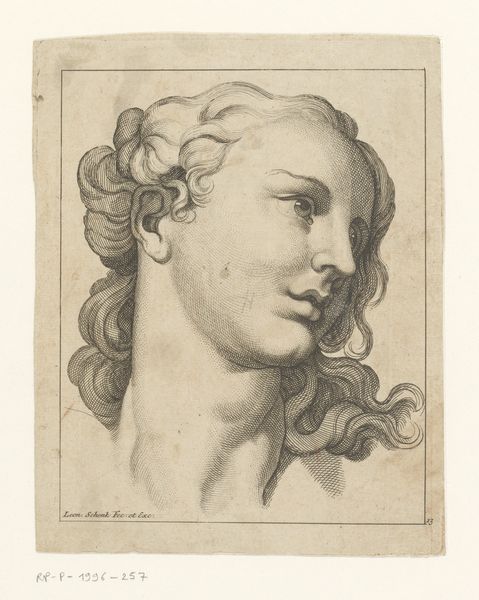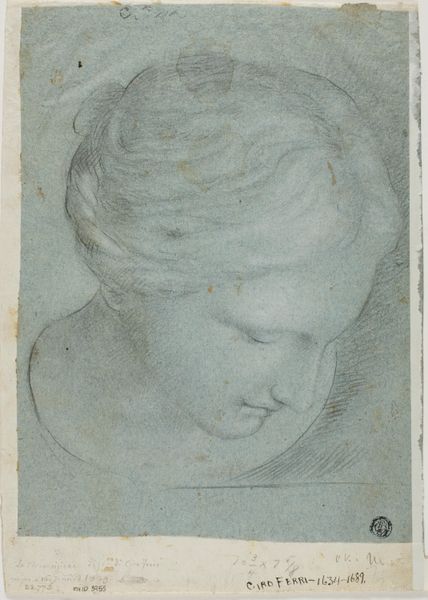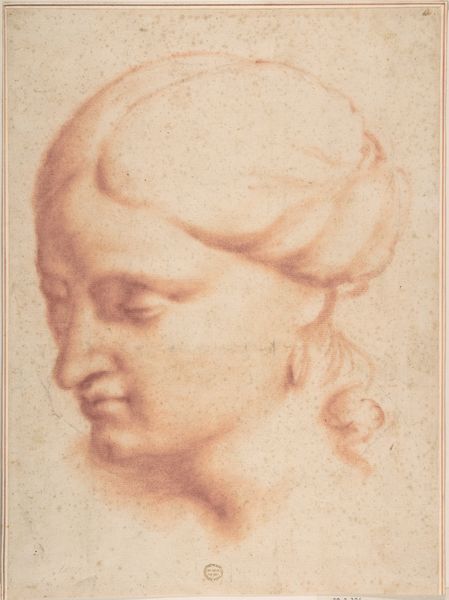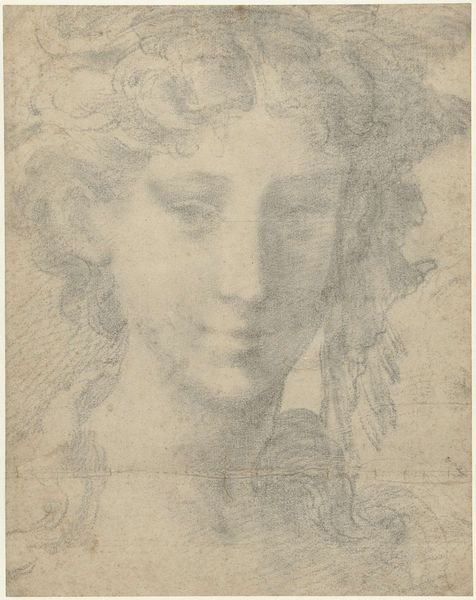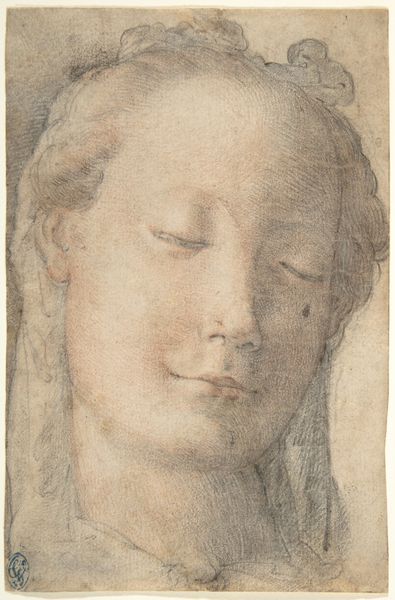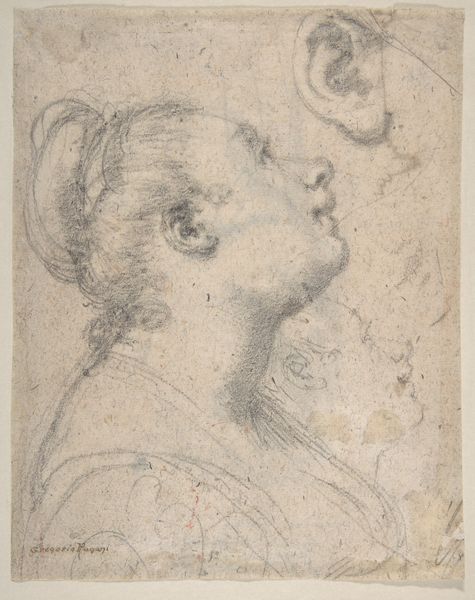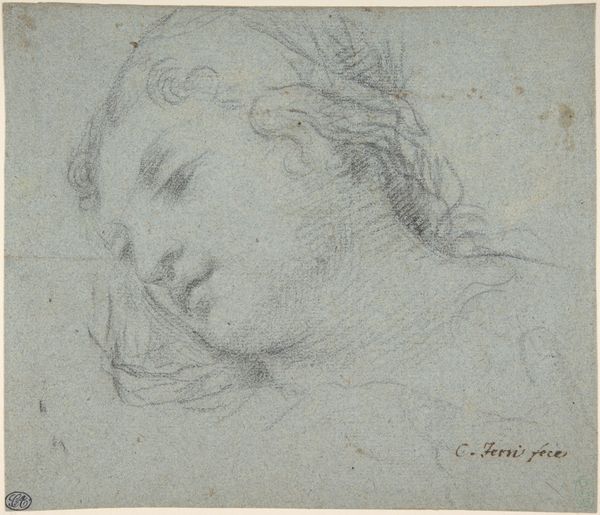
drawing, paper, pencil
#
portrait
#
drawing
#
paper
#
pencil
#
portrait drawing
#
northern-renaissance
#
early-renaissance
Dimensions: 203 mm (height) x 157 mm (width) (bladmaal)
Editor: So here we have "A woman's face in three-quarter profile," an anonymous pencil on paper drawing, created sometime between 1700 and 1750. It's incredibly delicate and contemplative, but also… unfinished? What's your take on it? Curator: Well, seeing a drawing like this, a study really, from that period always makes me think about the art academies and the changing role of the artist in society. Before the formalization of academies, artistic skill was largely passed down through guilds. This piece hints at a shift towards more academic training, doesn't it? What kind of visual vocabulary can we glean from it? Editor: Academic in what sense? I mean, it's a simple drawing. Is that part of it? Curator: Think about what it meant to depict something "accurately" during that period. Academic training emphasized classical ideals – line, form, anatomical correctness. Do you see evidence of that here? Look at the precise rendering of the ear, the subtle shading defining her cheekbone. This wasn’t just sketching; this was about mastering established conventions, about demonstrating skill within a defined system. What audience was being catered to? Editor: I suppose… I hadn’t considered the politics of it. The artist wasn't just drawing a face, but participating in a system? Curator: Precisely. And who gets to decide those systems, who gets access to that training, and whose faces are deemed worthy of such study? Those are questions worth pondering. Think about the impact institutions have had on the story being told! Editor: Wow, that really changes how I see the drawing. I was just appreciating the simplicity, but now I understand that even apparent simplicity can be steeped in complex social structures. Curator: Exactly! It encourages us to think about how art both reflects and reinforces those structures, making even a "simple" drawing like this incredibly rich with meaning.
Comments
No comments
Be the first to comment and join the conversation on the ultimate creative platform.

